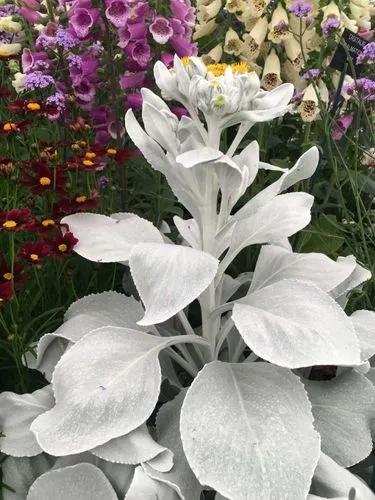Ensete ventricosum, commonly known as enset or ensete, Ethiopian banana, Abyssinian banana, and false banana, is an herbaceous species of flowering plant in the banana family Musaceae.
Abyssinian-banana Care
Ensete ventricosum



Ensete ventricosum is a huge, banana-like, evergreen perennial that is very similar to plants in the genus Musa where it once resided as Musa ensete. As distinguished from Musa, this plant has a stronger leaf midrib and generally does not produce suckers. It is a fast-growing, evergreen perennial that typically grows to 12-20’ tall, but may reach 30-40’ tall in its native tropical habitat. Huge paddle-shaped leaves (to 10-20’+ long and 2-4’ wide) are bright olive green with prominent midribs. Sheathing leafstalks form a trunk-like structure. White flowers (generally non-showy) in inflorescences appear somewhat hidden in summer on mature plants. Younger plants often will not flower and fruit for the first 3-5 years. Container plants cut close to the ground in fall each year may never flower. Banana-like fruits (to 3” long) are dry and inedible.
How to Care for the Plant

Water

Container-grown plants need ample watering during spring and summer months. Feed at weekly intervals during the spring and summer with a general-purpose liquid feed, or mix a controlled-release fertiliser into compost when potting. In autumn, reduce watering and feeding, watering only when on the dry side in winter.

Pruning

Little pruning and training is needed. Just cut away old leaves near their base and, when wrapping up plants outdoors for winter, some stems will need to be cut back.

Fertilizer

The best fertilizers for banana trees are high in potassium, phosphorus and nitrogen, like an 8-10-8 fertilizer. Because their fertilizer needs are so unusually high, the most common problems that bananas trees experience are potassium and nitrogen deficiencies.

Sunlight

Grow banana plants in full sun to partial shade in fertile, moist but well-drained soil, in a sheltered spot. Mulch the roots and protect the stem with horticultural fleece or a thick layer of straw in autumn so it doesn't succumb to winter frosts.

Soil

Banana trees prefer a slightly acid soil with a pH of 5.5 to 6.5. Due to the amount and size of their foliage, banana trees are very heavy feeders.

Temperature

The plant is considered hardy in the areas with the lowest winter temperatures of +1.7°C (35°F). In cooler regions, it may be grown in containers outside in summer and brought indoors for overwintering

Container

Size and vigour increases with size of container. Increase pot size by 5-7.5 cm (2-3in) initially. Once established in 30cm (10in) pots, increase size by 10-15cm (4-6 inches) every two to three years.

Popularity

2,729 people already have this plant 208 people have added this plant to their wishlists
Discover more plants with the list below
Popular articles






